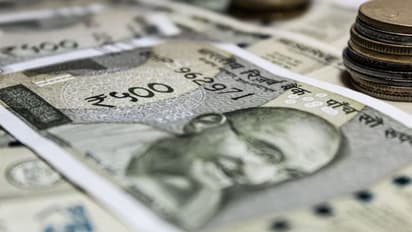India's richest 1% own over 40% of country's total wealth: Oxfam

Synopsis
"A one-off tax on unrealized gains of just one billionaire, Gautam Adani, from 2017-2021 could have raised Rs 1.79 lakh crore, enough to employ more than five million Indian primary school teachers for a year," Oxfam International said in the report titled 'Survival of the Richest'.
More than 40 per cent of India's total wealth is now owned by the country's richest one per cent, a new study revealed on Monday. The study also showed that just 3 per cent of wealth was shared by the bottom half of the population together.
The India supplement of rights group Oxfam International's annual inequality report was released on the first day of the World Economic Forum Annual Meeting in Davos. The rights group claimed that taxing India's 10 top billionaires at 5 per cent can generate funds to bring children back to school.
Also Read: Complete destruction of ideals taking place in India: Mallika Sarabhai
"A one-off tax on unrealized gains of just one billionaire, Gautam Adani, from 2017-2021 could have raised Rs 1.79 lakh crore, enough to employ more than five million Indian primary school teachers for a year," Oxfam International said in the report titled 'Survival of the Richest'.
According to the report, the requirement of Rs 40,423 crore for the nutrition of malnourished in India can be met for the next three years if India's billionaires are taxed once at 2 per cent of their entire wealth.
The report further notes that a one-time tax of 5 per cent on the 10 richest billionaires in the country will generate Rs 1.37 lakh crore, which is over 1.5 times the funds estimated by the Union Health Ministry (Rs 86,200 crore) and the Ministry of Ayush (Rs 3,050 crore) for the year 2022-23.
The Oxfam report also touched upon gender inequality. It highlighted that female workers earned only 63 paise for every rupee earned by a male worker.
According to Oxfam, the disparity is even starker in the case of Scheduled Castes and rural workers. Between 2018 and 2019, while the Scheduled Castes earned 55 per cent of what the advantaged social groups earned, rural workers earned only half of the urban earnings.
Oxfam said the report is based on a mix of quantitative and qualitative information to explore the impact of inequality in India.
To look at the wealth inequality and billionaire wealth in the country, Oxfam used secondary sources like Forbes and Credit Suisse. It used government sources like Union budget documents, parliamentary questions, NSS, etc., to corroborate arguments made in the report.
India's billionaires have seen their wealth surge by 121 per cent or Rs 3,608 crore per day in real terms since the pandemic began, Oxfam said.
On the other hand, in 2021-22, approximately 64 per cent of the total Rs 14.83 lakh crore in Goods and Services Tax (GST) came from the population's bottom 50 per cent. Only 3 per cent of GST came from the top 10 per cent, the report said.
According to the report, the total number of billionaires in India increased to 166 in 2022 from 102 in 2020. Further, the combined wealth of India's 100 richest touched $660 billion (Rs 54.12 lakh crore), which, according to Oxfam, could fund the entire Union Budget for over 18 months.
Oxfam India CEO Amitabh Behar said, "The country's marginalised Women, Muslims, Dalits, Adivasis, and those working in the informal sector continue to suffer in a system which ensures the survival of the richest. The poor are paying disproportionately higher taxes, and spending more on essential items and services when compared to the rich. The time has come to tax the rich and ensure they pay their fair share."
Oxfam cited a nationwide survey by Fight Inequality Alliance India (FIA India) in 2021 that showed that over 80 per cent of people in the country endorse tax on the rich and corporations who earned record profits during the Covid-19 pandemic.
The rights group also urged the Union Finance minister to introduce one-off solidarity wealth taxes and windfall taxes to end crisis profiteering. It also demanded a permanent increase in taxes on the richest 1 per cent and especially raise taxes on capital gains, which are subject to lower tax rates than other forms of income.
Also See: Video shot by Yeti Airlines passenger shows final moments of plane that crashed in Nepal's Pokhara
Stay updated with all the latest Business News, including market trends, Share Market News, stock updates, taxation, IPOs, banking, finance, real estate, savings, and investments. Track daily Gold Price changes, updates on DA Hike, and the latest developments on the 8th Pay Commission. Get in-depth analysis, expert opinions, and real-time updates to make informed financial decisions. Download the Asianet News Official App from the Android Play Store and iPhone App Store to stay ahead in business.